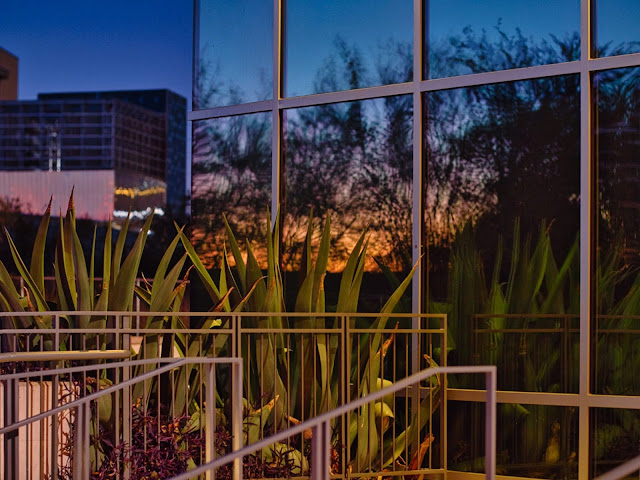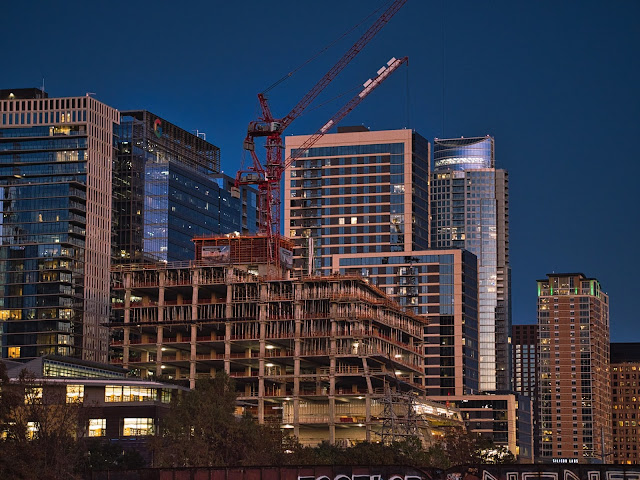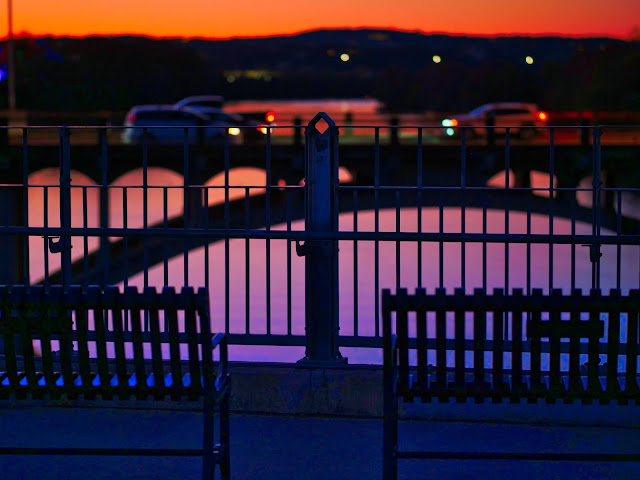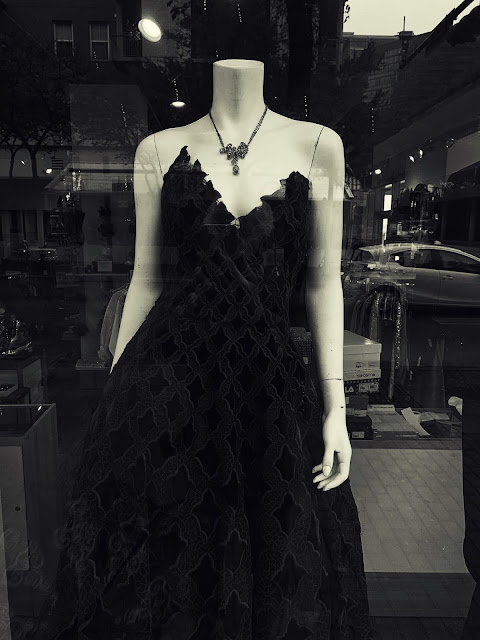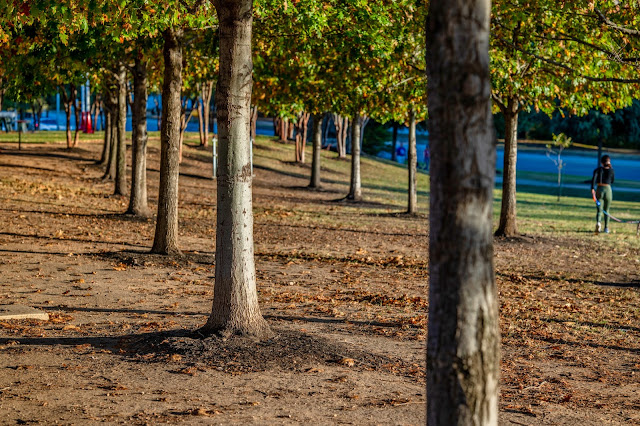12.01.2020
Thanksgiving Prosecco. Bring your camera to the table.
A short review of the Sigma Contemporary 56mm f1.4 lens for m4:3 cameras. And another installment of photos from last evening's walk.
The Seaholm development, built around the bones of a retired power plant, lights up the evaporator stacks for the holidays. It's a fun look.
Is the GH5 only suitable for photography in bright light? Let's take one for a walk and find out.
I think the GH5 is trouble free right up past ISO 800 and very useable for photography right up to ISO 3200 as long as you are willing to get the exposures just right. If you like to underexpose and bring up your shadows in post (which I admit I do like to do) then you might want to cap the range at 1250 or 1600.
I shot most of the images with the lens set either wide open or one stop down at f2.0.
It was nice to be in cold air. It feels so different from my baked in impression of the city as being in a perpetual heat wave...
11.30.2020
Come on Tuck. That light's not going to light itself. Well, actually it did. Buying more lights is NOT crazy.
It's funny to me when I look around the studio and notice how few electronic flashes of any type still live here, and at the same time how plentiful LED lights have become. Flash used to be the "work horse" of any photographic studio and, after cameras and lenses, it's where most commercial photographers tossed their money. But then 2010 came along and changed everything. 2010 was the year mirrorless cameras really started showing up on people's radar but it was also the year when the market started to deliver an accelerating deluge of LED products of all stripes, sizes and prices.
One photographer even was commissioned to write a book about LED photography for photographers, a little more than ten years ago. It was published in early 2012. You can learn more about that book here:
I'm not suggesting that you run out and buy a copy because everything has changed in the markets and the information space in the ensuing almost nine years. Three or four lifetimes in LED world. Yes, everything has evolved.
At any rate LEDs have become pervasive in the imaging world. On movie sets. For TV production. In the equipment lists of every videographer. And in the studios and equipment cases of an ever growing number of photographers. Even the ones who don't make videos.
Early on there was a demarcation between lights with great color and lights that were cheap. That boundary has pretty much vanished and now we're concentrating more on power output and features. Almost every light being pressed into professional service has a CRI (color rendering index) or 95 or better and does a great job of hitting their color temperature targets. Earlier lights depended on a panel implementation because the lights were made powerful enough for work by using hundreds or thousands of smallish bulbs spread across the panels.
Panels work fine and I have four Lightstorm panels that do a nice job ---- except a panel has a big spread and it's difficult to get hard edge effects. Also, if you want to use good modifiers you'll probably need a two light stand set up. One stand for the light and a second one for the modifier.
COB, or chip on a board, LED lights started to become affordable about five years ago and were made insanely popular by the Aputure 120D light which used a 1.5 by 1.5 inch COB LED and featured a Bowen's mount. Even at over $650 it sold briskly and there's now an "improved" model. The LED/COB tech basically took the spot where flash tubes used to sit on lights and allowed for the use of the same modifiers and reflectors that most people were already using on their various flashes.
I'd been buying more expensive lights from Aputure until I found the Godox SL60W which is a no frills COB light, rated at 60 watts, is daylight balanced and uses Bowens accessories. It's also really cheap at around $130. I wrote about these lights a while back and I like them so much I bought three. I use them all the time. Literally, every day. If not for work then for lighting up stuff around the compound.
The three SL60W lights and the four Aputure Lightstorm panels were working for me until I did a job back in August for a bio-tech company, at their headquarters. I needed to light up a 5,000 square foot laboratory and I did it, just barely, and by the skin of my teeth. At that point, and anticipating more work from the company (which arrived last month), I decided I needed to bolster my LED collection with some more powerful lights. I came across some good reviews of some new Godox products by Vlogger, Gerald Undone. Here's one review that's on topic: https://www.youtube.com/watch?v=DbBN_b7OGec
I watched his take on a new generation of Godox COB models and assessed how his results applied to my needs. I don't need battery power or fully silent lights but I can be parsimonious so I decided to purchase the SL150Wii. It's an update from a previous model and provides a mode whereby you can work at a reduced power output but are able to turn off the cooling fan entirely. The light is sturdy, fan cooled and plugs into wall sockets and runs off AC. The light belts out a good deal of clean illumination and seems to fit in well, color-wise, with the rest of my LED inventory.
The light comes with a faceted reflector that makes it very efficient at delivering a lot of lumens. There's a dial on the right side of the rear panel for power output and also a switch to go into a lower power/fan-less mode. On the left side there's a switch to enable special effects and a dial with which to choose them. Think: Lightning strikes and emergency flashers (albeit with only white light). The light also comes with a remote control which allows you to raise and lower the power levels of the light without having to access the rear panel.
The light is rated at 5600K and does not have a sister model to provides multiple color temperature settings.
A week after I received the light (which I ordered from and paid for at Amazon = no freebies! No sponsor!) I had my second multi-day engagement with the big bio-tech company. I used the new, big Godox mostly by bouncing it off the high, white ceilings to provide overall illumination in big rooms while filling in and accenting my subjects with the less powerful LED lights. It worked very well and we breezed through two days of shooting "What you light is what you see." stuff. Adjustments to the lights, made by an assistant in real time while I observe on a hand held monitor, was a great way to work, giving large amounts of control.
But, if one big light is good then two big lights is better. When I bought the first light it cost $349. This weekend I decided I might really want that second light so I headed back over to check on pricing and availability. They were on sale for $279. Having had nothing but great experiences with the first one I was happy to click "yes" to a second one. Especially at 25% off.
The SL150W/ii is not a powerful enough light to offset the sun outside but it's a good balance of size, weight, price and power for indoor photography shoots, and just about any sort of video production. With two of them bouncing off high, white ceilings I feel like I've got more options to play with in large spaces. If I push them both through a couple layers of white diffusion, stretched across a six foot by six foot panel frame, then I've got some really beautiful lighting.
While I wait for the second light to arrive I wanted to photograph my first SL150wii for this post and it was already set up on a C-stand with a white umbrella in front of it. I pulled a 4x4 foot piece of foamcore and held it at the back of the product and just out of frame and took a few shots with a tripod mounted Sigma fp. In effect, the light actually did light itself. All of the light on the product camera from the product. Pretty cool. Very easy.
I'm not suggesting you rush out and buy an SL150Wii. I just wanted to share why I like the light and why I wanted a second one. Forward, into a mostly flash-less future.
New murals spring up on Lamar Blvd. Just north of the lake. Really wonderful stuff.
From today's walk through downtown with the big honking camera and a big zooming lens.
Nice to have some cooler weather to walk through. Trying to be careful what I ask for though, the temperature is supposed to drop into the twenties (f) tomorrow night which means we're in for a chilly jaunt from the locker room to the (outdoor) pool on Tuesday morning. And again on Wednesday.
Happens every year. We get used to it. The coldest day I remember swimming was one January day when the temperature was down near 20° and we had a brisk north wind. The pool deck was too icy to walk on so the coaches sanded a path from the side of the pool closest to the locker rooms and we all entered and exited the pool at that one narrow point.
It was a bit unnerving to see big icicles hanging from the starting blocks. But the pool is always heated to 80° so our biggest issue during the workout was the thick cloud of steam hanging over the top of the water.
Ah, good times.
11.29.2020
A "landscape" photograph of downtown Austin today. Chilly but beautiful. Tech note at the bottom of this post for Panasonic S1x users!!!
I'm going to have to walk more over the next two weeks otherwise I'm going to get fat. I just re-read the instructions from my surgeon. Surely his handout/pre-op written materials are aimed at worst case scenarios but it threw me for a loop when I read "no strenuous exercise for two weeks." That's criminal. We'll negotiate, but I have a feeling walking will be the recommended recourse. We'll beg for swimming dispensation after the first few days. They do make waterproof bandages you know.
Since I have to be out walking anyway I thought I should work on my landscape photography skills. I took that old, rusty Lumix S1R out today, along with the dusty and dented 24-105 lens. I do appreciate it when the weather cooperates. That's the actual sky; not a retouch.
Austin can be beautiful in the Fall. I was going to break all the rules and get on a plane to go watch the Aspens turn but someone told me that already happened this year and look! Our trees are turning color too!
I'll probably be grumpy and in pain, and addled by my experience at the clinic on Wednesday so don't expect a flurry of early December posts --- BUT that doesn't mean I'm pulling the plug and wandering off into the desert. By Thursday I should be so bored and restless I'll be banging on the keyboard for hours.
Tech Note. People with S1 and S1R cameras are reporting issues with the new camera firmware (1.6). Some weird pulsing and stuff during AF; especially under fluorescent and other non-continuous lighting. The current "fix/workaround" is to set the EVF screen refresh to 60 Hz instead of the typical 120 Hz refresh and that seems to help temporarily resolve nearly everybody's issue.
I'm sure Panasonic is getting an earful this week and that they'll have a fix rushed out in no time. But I think the update really did make the C-AF faster in video. Too bad it messed up something else. Unless you really need the new video features you might want to wait on that firmware upgrade until we all have more info.
11.28.2020
And today we get our first taste of winter. What have I been playing with lately? Can a camera be too eccentric? Sure.
SAME.
11.27.2020
My newly unleashed super-cam finally became a high performance competitor after I, painstakingly pulled $7.95 out of my plastic squeeze purse...
It was a whopping $2.95. Gonna break me if I don't watch out. (damn ellipses ban).
11.26.2020
You've heard about walking meditation? What some of us do is walking/photographing meditation. (I can no longer use ellipses; my son says they have become passé).

I guess it's all about being in the moment. And I'm a selfish person; I don't want to share those moments with anyone else. It would change everything, and mostly not for the better.
This holiday will be one of the weirdest ones on record. It's our first Christmas shopping season where interest in video seems to be outstripping traditional photography.
I'm still a photographer at heart but I can't help noticing that 7 of my last 10 commercial jobs were about video production and not photography. And, if I look on social media sharing channels (TikTok, Instagram, etc.) I'm finding more and more video snippets interspersed among the photos of cute dogs and stereotypical beauty models. I think this will be the first holiday season in which my shopping list for myself (that's my favorite one) is larded with video-oriented toys instead of cutting edge still camera gear.
I recently produced three different video programs for my actor/singer/performer friend, Kenny. On each project I figured out something new that would make my productions either easier or better --- or both.
Here are my three generic recommendations to make video more productive and fun:
Monopods with video heads. I get so much use out of the big Benro monopod with the S4 "fluid" head I bought a couple of years ago. I use it a lot for fast moving productions because it's so much faster to set up than a big tripod. Mine has the little feet at the bottom which provide a relatively stable base; but it's a set up I have to keep my eye on if my intention is to walk away from the combination of camera and monopod for even a second...
I mostly use the monopod for those in between shots where I want the option of quickly repositioning but I'm staying relatively still and stable when shooting. Much different from the gimbal shots where movement is the entire reason to use a gimbal.
The biggest revelation, vis-a-vis monopods, that I've had this year came while watching videos about video production by Brandon Li, over on YouTube. I love the look of crane shots in movies and I've worked with big cranes and movie cameras before. The cranes were heavy and mostly required lots of set up and rehearsals. They are not what I would consider "portable." So, with that preconception in mind, I was sitting in the office watching a video by Li about gimbals when he put his gimbal on the end of a monopod (taking off the fluid head first) and effectively uses the combination of gimbal and monopod as a highly portable crane. He showed his techniques and results as he started with a very high shot and swooped the camera down into a food market into a level shot of a shop keeper. I played that part back five or six times.
You'll need to develop some arm strength to do those moves on a regular basis but he did it without all the drama and complexity of setting up a huge stand and a ten foot crane. And he did it without a crew.
No matter how complex you want to get with video, or with many different subjects in photography, a monopod is an ultimately useful starting point for camera stabilization. For the most part, except for locked down video interviews, or technically demanding photography, I prefer a stout, footed monopod to just about any tripod. I'm brand agnostic. I mentioned the biggest Benro monopod but there are dozens of good choices in the market from which to choose.
External Monitor/Recorders. I'm currently on my third generation of Atomos external monitor/recorders. I call them monitor/recorders because these are the two different functions the products I use offer. You can get inexpensive five and seven inch monitors that do not record digital video, and they work great when it comes to offering you a magnified view along with some better focusing options, but I really like the ones that record as well as monitor. My last "upgrade" was from an Atomos Ninja Flame to an Atomos Ninja V.
If I was looking for strictly a monitor the "Flame to V" wasn't much of an upgrade. In fact, in a couple of ways it was a downgrade. I moved from a clear and bright seven inch screen to a five inch screen. I moved from a unit that could take two "hot swappable" batteries to a unit that takes only one battery. But since I was also looking for a state of the art recorder the V is the better option.
It's smaller and lighter so you can more easily balance it on a cage or on your camera. The screen is capable of higher brightness and the touch controls are more detailed and mature. I like using it because it allows so much more choice when it comes to the kinds of video files you can create. While files straight out of most cameras are a very compressed file type called Long GOP, which saves space on memory cards but is tougher for computers to edit, the Atomos units can take the uncompressed content over HDMI and make ProRes or DNx files that are in an All-I format. It's a format that takes up more space on a memory card (or an SSD) but which requires much less furious calculation and demystification in the editing process. And, since every frame is self contained it's less prone to showing motion artifacts and compression artifacts when edited.
But I really like the Ninja V because it opens up nerdy, fun file types from certain cameras. With the Sigma fp you can import ProRes Raw files in 4K. If you use a Panasonic S1H you can import files into the same ProRes Raw format but you can do it in 5.9K file sizes. You can do the same with the S5 and, promised in early 2021, an upgrade to the S1 will allow it to do the same.
A good monitor is a lifesaver for stuff like long lens follow camera work in theater or sports. You can punch in a focus while you are rolling which is something most cameras don't allow on their own. You can also set exposures quickly and accurately via waveforms on the monitor and, if you have a human subject you can use your vector scope feature to get near perfect flesh tones which will save you a lot of time and energy in post production.
I love the fact that my "V" takes fast, relatively cheap (compared to big, fast SD cards) SSDs. I just bought a terabyte SSD for additional storage and it's faster than any of my SD cards (which are mostly V90s) and cost me about $100. I can shoot video to the SSD and then, using a simple SATA to USB-C cable, hook the drive directly to my computer and edit to and from the drive. Of course, I would generally back up the original material somewhere else first.
Gimbals for everything. Kind of kidding here. If I were getting my feet wet in video I'd start out the way I did and buy a decent $100-$150 gimbal for my iPhone. The Smooth 2 from Zhiyun is the one I bought but I'm sure it's been superseded by something better at the same price by this time. What this "entry" gimbal does is teach you how gimbals really work and let you practice without wearing yourself down trying to grapple with the weight of a bigger gimbal+camera+lens. Gimbals add the ability to move with and around subjects with a lot of freedom. And most phones are good enough video cameras now to make the exercise fun.
If you aren't shooting video professionally or if your style of video only calls for using a gimbal on relatively few shots you can look in the used market and find some real bargains. Gimbal makers are in that classic super fast improvement stage where more and more features are being added and more controls put at operator's fingertips. The integration with phones and iPad is also accelerating. What this means is that gimbal power users, and twitchy consumers, are dumping recent models of gimbals at a record pace.
The Ronin-S used to be the "go to" gimbal but that was two years ago. It hit the market at somewhere around $700-800, depending on the accessory package. I bought a complete, clean, used one a couple months ago for a little over $100. A couple of weeks ago a local videographer upgraded from last year's ultra darling gimbal, the Weebill S to the newest DJI RS2. He went from a $500 gimbal to a $900 gimbal and sold me his clean and perfectly function Weebill S for around $250. And that's with a transmitter package included.
At those kinds of prices I think most of us can afford a good gimbal. And the funny thing is that the two used gimbals I bought this way were both models that operators were raving about and salivating over in the last couple of years. Tons of great work has been made by users of both models.
Here's a couple of important things to be aware of when using a gimbal: You have to take the maker seriously when it comes to weight limits. The overall weight of the camera package affects the motors of the gimbal and can cause muttering and vibration if you go over the limits. Second, getting the camera balanced correctly makes the gimbal easier to operate and provides the smoothest results. Small cameras work better than bigger, heavier cameras. I'll happily trade off a bit of full frame S1H performance for a more nimble and manageable camera like the G9 or GH5. Finally, don't think you'll be using big, long zooms with your gimbal. While there are models out there that will handle heavy loads those are not the models that most of us want to toss money out for one man projects or advanced amateur learning adventures. Long tracking shots with f2.8 Zooms are probably still better handled by using dollies or other methods.
These three categories of accessories have provided the most fun and the best looking video for me in 2020 and I think they up the production quality of projects in a cost effective and meaningful way.
Beyond that the biggest lure for me is still lenses. I'm constantly surprised at what a different the right lens makes. But you can research that just about anywhere.
Happy Thanksgiving to everyone. I'm feeling gratitude for just making it through such a chaotic year. I hope we all make it intact into 2021.
We're sticking to home base this year. No celebrations with relatives other than a call on Zoom with Belinda's family. We'll all bring pie and coffee to the call. Ben, Belinda and I are all fortunate to be able to work almost exclusively from home. I'm probably the person in the family who deals with people outside our "bubble" the most but in my work encounters up until ten days ago I've been extremely careful to always wear a mask and require mask wearing by ANYONE at my location. We're finishing up for the year. All the rest of my work is post production alone in my studio and delivery via FTP.
I'm hoping all three of the major vaccine makers are up and running with safe vaccines in very early 2021. I'll be first in line to get my two doses, right after they take care of all the essential medical personnel and the first responders. Oh, and the workers who have to deal with the vagaries of face-to-face service with the nut jobs in our culture.
It's bittersweet to see the stock market set new records while pandemic induced poverty is still rampant and may be growing. We're the lucky ones. We have a great roof over our heads, food on the table and gimbals in our bags. Time to think about 2020 contributions to charities.
If you itemize on your tax returns your advisor should let you know that there was a rule change just for 2020 that will allow you to maximize your deductions to charities. I've got the local food bank on my list.
If you can it's a good time to make a difference. Everything helps.
Off to see what I can do to help with dinner. Have a great holiday and I hope you drop by tomorrow to see what my fevered brain has concocted for your reading pleasure. - Kirk




